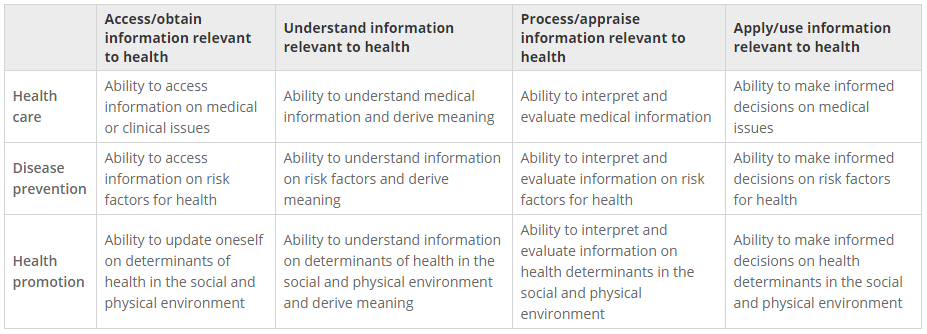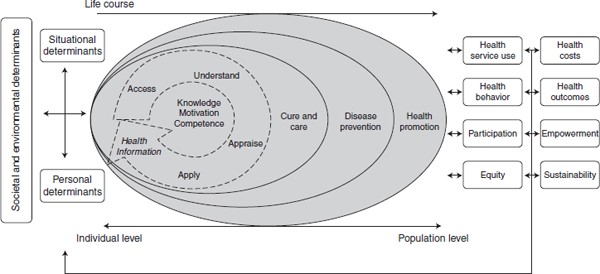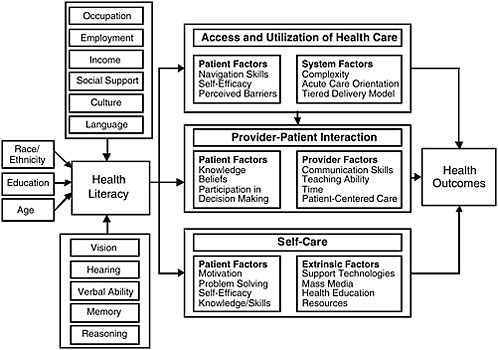It Begins with You
Health Literacy -> General Health Literacy FrameworksFunctional Health Literacy—basic reading comprehension and writing skills to understand health information/messages, together with knowledge of health conditions, services, and systems.
Communicative/Interactive Health Literacy—higher-level communicative and social skills required to extract and discuss information with others.
Critical Health Literacy Skills—advanced literacy, cognitive, and social skills to analyze information and make informed decisions.
The full article can be accessed at: https://heapro.oxfordjournals.org/content/15/3/259.full.pdf+html

Kristine Sorenson – General Health Literacy
In 2012, Sorensen and colleagues from the Consortium Health Literacy Project European completed a systematic review and integration of health literacy definitions and models.
Their work included a matrix with four dimensions of health literacy applied to three health domains.
This model is also represented by the following illustration.
Paache-Orlow & Wolf – General Health Literacy
In 2007, Paasche-Orlow and Wolf created a conceptual model that illustrates the causal pathways between limited health literacy and health outcomes.
They proposed that “health literacy should be viewed as both a patient and system phenomenon” with three points along a continuum that are influenced by health literacy:
- Access and Utilization of Health Care
- Provider-Patient Interaction
- Self-Care
The following diagram illustrates this model.
David Baker – General Health Literacy
In 2007, Paasche-Orlow and Wolf created a conceptual model that illustrates the causal pathways between limited health literacy and health outcomes.
They proposed that “health literacy should be viewed as both a patient and system phenomenon” with three points along a continuum that are influenced by health literacy:
- Access and Utilization of Health Care
- Provider-Patient Interaction
- Self-Care
The following diagram illustrates this model.





